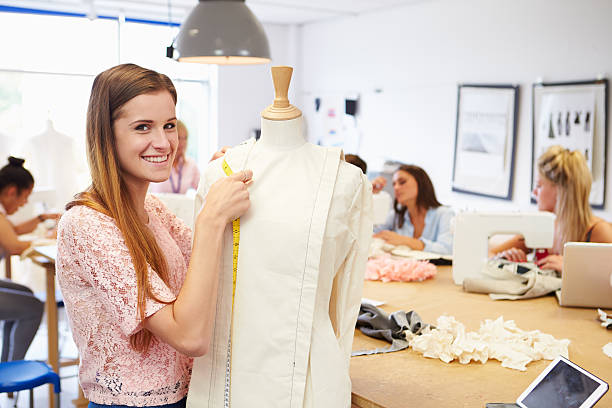Diploma in Fashion Designing: The Fastest Way to Enter the Fashion Industry
Diploma in Fashion Designing: The Fastest Way to Enter the Fashion Industry
Blog Article
In a world where fashion defines culture, identity, and even business trends, stepping into the fashion industry can be both exciting and rewarding. But what if you’re eager to start your career quickly without spending 3–4 years on a traditional degree? That’s where a Diploma in Fashion Designing becomes your fast-track entry into this dynamic field.

For aspiring designers, stylists, and creatives who want hands-on skills and industry exposure — a diploma course offers the perfect blend of practical learning and career readiness. In this blog, we explore why a Diploma in Fashion Designing is the smartest, fastest way to break into the fashion industry.
1. What Is a Diploma in Fashion Designing?
A Diploma in Fashion Designing is a short-term professional course that focuses on building strong foundational and practical skills in fashion. Typically ranging from 6 months to 2 years, it’s tailored for students, working professionals, and career-switchers who want to pursue fashion without committing to a full-time degree.
Unlike degree programs that often include broader theoretical content, diploma courses are more job-oriented, skills-focused, and industry-specific.
2. Why Choose a Diploma Over a Degree?
If you’re a fast learner or already know you want to enter the fashion industry quickly, a diploma is the ideal route. Here’s why:
✅ Quick Entry Into the Fashion World
Diploma courses can be completed in as little as 12 months, allowing you to start working or freelancing sooner.
✅ Lower Cost
Compared to full-time degrees, diploma programs are more affordable, making them accessible to more students.
✅ Focused Curriculum
You’ll learn only the most relevant and updated fashion skills — perfect for those who want to dive straight into the creative aspects.
✅ Flexibility
Many institutes offer part-time, weekend, and online options to suit working professionals or students with time constraints.
3. What You Learn in a Fashion Designing Diploma Course
A diploma in fashion designing is designed to give you hands-on skills and confidence to work, intern, or freelance right after completion. While the curriculum may vary by institute, it generally includes:
✦ Fashion Illustration & Sketching
Learn how to draw figures, garments, and detailed design concepts manually and digitally.
✦ Textile & Fabric Knowledge
Understand various types of textiles, weaving methods, fabric properties, and material selection.
✦ Garment Construction & Pattern Making
Master the basics of cutting, stitching, tailoring, and creating patterns that form the base of every outfit.
✦ Draping Techniques
Develop skills in styling fabric on mannequins to create free-form and structured silhouettes.
✦ Fashion Styling & Trends
Stay updated on current fashion trends, seasonal collections, and styling tips used in shoots and ramp shows.
✦ Fashion CAD (Computer-Aided Design)
Get trained in tools like Adobe Illustrator, Photoshop, and fashion-specific CAD software for digital design.
✦ Portfolio Development
Create a professional portfolio with design boards, fashion illustrations, garment samples, and theme-based collections.
4. Eligibility and Who Should Enroll
A diploma in fashion designing is open to anyone with a passion for fashion. Eligibility generally includes:
Completion of 10th or 12th standard
No age restrictions
No prior experience required (though interest in sketching, styling, or fashion helps)
Ideal for:
Students wanting a creative career right after school
College dropouts seeking skill-based education
Working professionals switching to fashion
Entrepreneurs planning to start their own label or boutique
5. Career Opportunities After a Diploma in Fashion Designing
Many people believe that only a degree leads to success in fashion, but in reality, a diploma opens plenty of career paths, especially if you are skilled and passionate.
Here are some of the top roles diploma holders can pursue:
Fashion Designer
Fashion Stylist
Textile Designer
Visual Merchandiser
Fashion Illustrator
Pattern Maker
Fashion Consultant
Boutique Owner
Costume Designer (TV/Film)
Freelance Designer or Tailor
With the rise of social media and e-commerce, many diploma holders also become independent fashion entrepreneurs or start their own fashion brands.
6. Industry Exposure and Practical Learning
Most reputed diploma programs integrate real-world exposure through:
Internships with fashion designers or brands
Live projects and design showcases
Workshops with stylists, influencers, and fashion editors
Ramp shows and exhibitions
Field visits to textile markets, dyeing units, and design studios
This exposure ensures students are industry-ready and can build a portfolio that helps in job placements or freelancing.
7. Popular Institutes Offering Diploma in Fashion Designing in Delhi
If you're looking for the best institutes in Delhi to pursue your diploma, consider the following:
???? INIFD Delhi (South Extension)
Offers 1-year diploma programs with fashion week exposure
Known for placement assistance and mentoring by celebrity designers
???? Pearl Academy
Offers diploma courses with global design exposure
Excellent campus facilities and alumni network
???? JD Institute of Fashion Technology
Known for its practical approach and creative teaching methods
???? IIFT (International Institute of Fashion Technology)
Offers flexible course durations and industry interaction
???? YMCA Institute for Fashion Technology
Affordable diploma programs with hands-on training
8. Fast Track to Freelance and Fashion Business
With a diploma and a solid portfolio, you can start working as a freelance fashion designer. Many successful boutique owners, stylists, and personal designers have launched their businesses after completing a diploma.
What You Can Do After the Course:
Launch your own label or brand
Start a design studio or tailoring unit
Sell through Instagram, Etsy, or Myntra Studio
Offer personal styling services
Collaborate with influencers or models
The low investment and high skill-focus of diploma courses make them ideal for young fashion entrepreneurs.